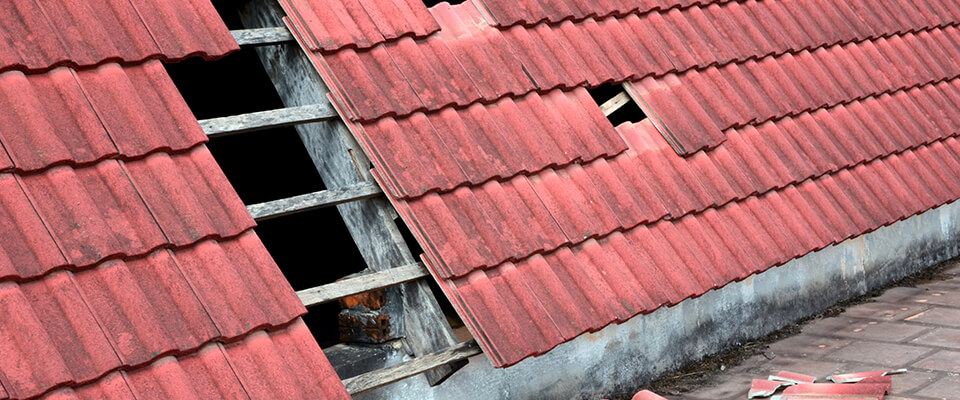Yes, AXA’s home insurance policies cover loss and damage from storms. So, if your home is damaged as a result of a storm, you should have peace of mind that you are protected.
What to do after a storm?
If your home has been adversely affected by a storm or bad weather conditions, take the following steps when making a claim, to ensure it proceeds efficiently:
- Storms tend to damage roof tiles, gutters, TV aerials, satellites, fences and windows. Buildings can also get damaged if they are hit by falling trees. Once it is safe to do so, you should assess the damage to your home and then take photos, if possible, as they may help with your claim. It’s important to check your policy for what you’re covered for.
- If items in your home have been damaged by water, you may remove them from your home but don’t dispose of them yet! Your insurer might need to inspect these items to see the extent of the damage. We recommend storing damaged items in a shed or storage container until your claim has been settled.
- Depending on your policy, insurers will usually pay for the cost of temporary repairs so once this is confirmed, you should arrange for repairs to take place as soon as possible. Your insurer might also provide you with recommendations on tradespeople to use for repairs. If your home is uninhabitable, your insurer may also fund alternative accommodation for you.

Emergency Home Assistance
We provide 24-hour emergency home assistance for emergencies in the home that need a short-term fix, such as a damaged roof or plumbing problem. If you need a tradesperson in a hurry at the weekend, knowing you have this option can provide great peace of mind. Call 0818 7 365 24 to speak to the AXA emergency home assistance care team.

Making a Claim
If you need to make a home insurance claim, you should contact your insurance provider at the earliest opportunity. If your insurance is with AXA, you can easily make a claim online or call our team on 01 858 3200.
Before making the claim, be prepared by:
- Having your policy document to hand
- Having all the information you collected ready, such as photos and, if you have them, receipts for damaged items.
- Having as much information as possible in relation to the claim to avoid omitting important details.
- Knowing what you’re claiming for, as well as estimated costs.
- Documenting the claims process. From the first call with your insurance company, you should note dates and times as well as the content of the conversations and any letters you receive about your claim.


